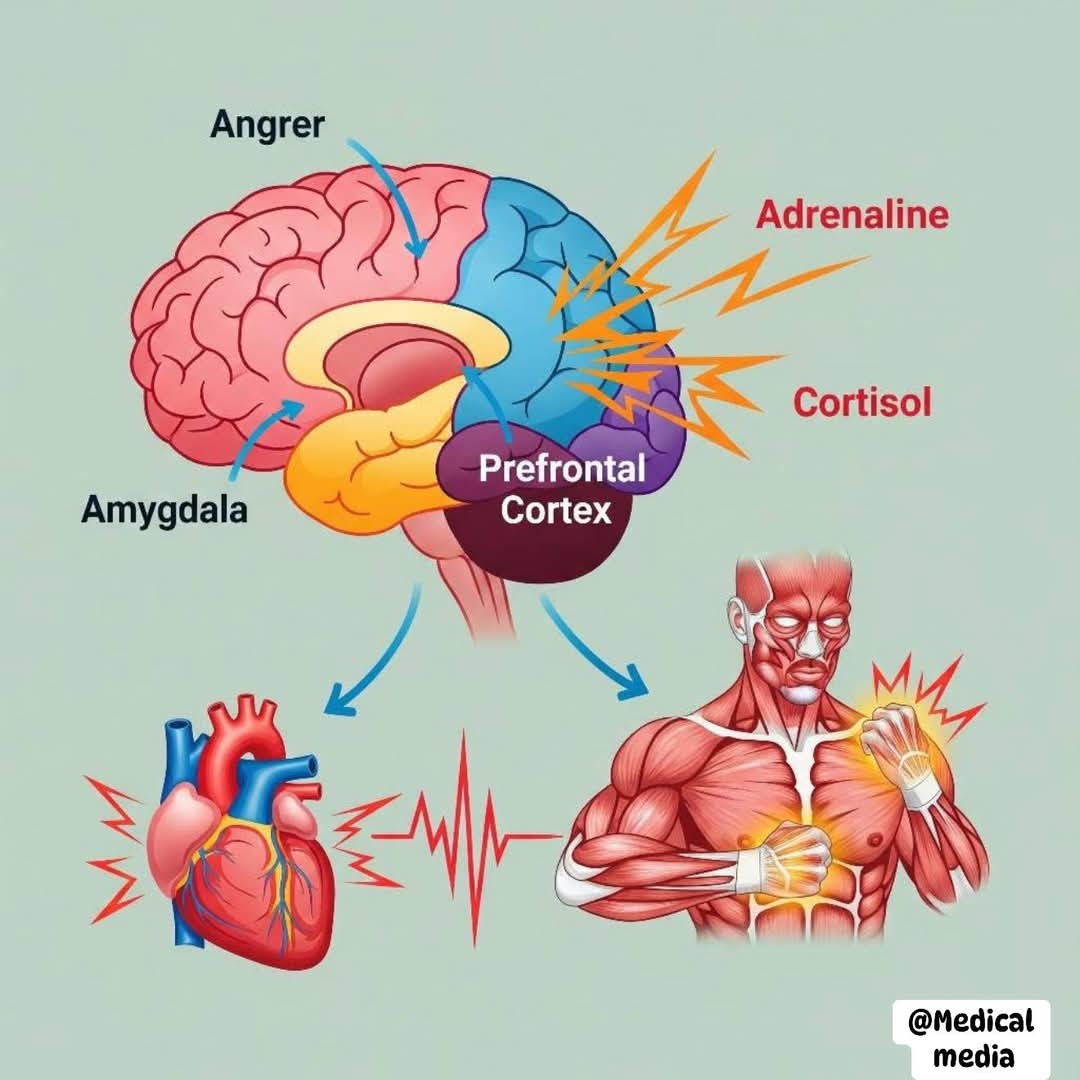분노의 신경생물학적 기전
Neurobiological mechanism of anger
분노는 강력하고 원초적인 감정으로, 과학적인 관점에서 볼 때 우리의 생물학적 기반에 깊이 뿌리내리고 있으며, 기본적인 생존 메커니즘의 일부로 기능합니다. 분노를 느낄 때, 우리의 뇌와 신체에서는 스트레스 반응 시스템에 의해 주로 조율되는 복잡한 사건들이 연쇄적으로 발생합니다.
다음은 분노의 과학적 배경에 대한 기본적인 설명입니다.
- 뇌의 경보 시스템 (편도체):
- 위협, 불공정, 자극(실제 또는 상상)을 인지하면 뇌의 변연계에 있는 아몬드 모양의 구조인 편도체가 가장 먼저 반응하는 영역 중 하나입니다. 편도체는 뇌의 감정 처리 중추이며, 특히 공포와 분노에 민감합니다.
- 의식적인 마음이 무슨 일이 일어나고 있는지 완전히 처리하기 전에 위험을 신속하게 알립니다.
- "싸움 또는 도피" 반응 (교감 신경계 & 호르몬):
- 편도체의 신호는 시상하부를 자극하고, 시상하부는 "싸움 또는 도피" 반응을 담당하는 자율 신경계의 일부인 교감 신경계를 활성화합니다.
- 이는 부신에서 스트레스 호르몬이 빠르게 방출되는 결과를 초래합니다. 주요 호르몬은 다음과 같습니다.
- 아드레날린(에피네프린): 즉각적인 에너지 급증을 유발합니다.
- 노르아드레날린(노르에피네프린): 각성과 집중력을 더욱 높입니다.
- 코르티솔: 신체를 계속해서 높은 경계 상태로 유지하는 장기간 작용하는 스트레스 호르몬입니다.
- 생리적 변화 (행동 준비):
- 이러한 호르몬은 신체를 육체적 대결이나 탈출에 대비시키는 일련의 생리적 변화를 일으킵니다.
- 심박수 및 혈압 증가: 혈액은 소화와 같은 필수적이지 않은 기능에서 근육, 뇌, 심장으로 이동합니다.
- 호흡 가속: 더 많은 산소를 흡입하기 위해서입니다.
- 근육 긴장: 근육이 긴장되어 활동을 준비합니다.
- 감각 예민화: 시각, 청각과 같은 감각이 예민해지고 주의력이 인지된 위협에 집중됩니다.
- 체온 상승
이 설명은 분노의 신경생물학적 기전을 간결하고 명확하게 요약하고 있습니다. 각 단계의 설명이 명확하고 이해하기 쉽도록 구성되어 있습니다.

Anger is a powerful, primordial emotion, deeply rooted in our biological foundations from a scientific point of view, and functions as part of the basic survival mechanism. When we feel anger, we have a chain of complex events in our brains and bodies that are primarily coordinated by stress response systems.
Here is a basic description of the scientific background of anger.
- Brain alarm system (amygdala):
- Recognizing threats, injustices, or stimuli (real or imaginary) is one of the first areas where the amygdala, an almond-shaped structure in the limbic system of the brain, responds. The amygdala is the brain's emotional processing center, particularly sensitive to fear and anger.
- The conscious mind promptly informs of the danger before it can fully deal with what is happening.
- "Fight or Flee" Response (sympathetic nervous system & hormones):
- Signals from the amygdala stimulate the hypothalamus, and the hypothalamus "fights or escapes". It activates the sympathetic nervous system, which is part of the autonomic nervous system responsible for the response.
- This results in the rapid release of stress hormones from the adrenal glands. The main hormones are:
- Adrenaline (epinephrine): causes an immediate energy surge.
- Noradrenaline (norepinephrine): It further increases arousal and concentration.
- Cortisol: A long-acting stress hormone that keeps the body on high alert.
- Physiological changes (behavioral preparation):
- These hormones cause a series of physiological changes that prepare the body for physical confrontation or escape.
- Increased heart rate and blood pressure: Blood travels from non-essential functions such as digestion to muscles, brain and heart.
- Accelerating breathing: To inhale more oxygen.
- Muscle tension: The muscles are tense and prepare for the activity.
- Sensory sensitization: Senses such as sight and hearing become sensitive and attention is focused on perceived threats.
- Increase body temperature
This explanation summarizes the neurobiological mechanisms of anger concisely and clearly. The explanations of each step are structured to be clear and easy to understand.